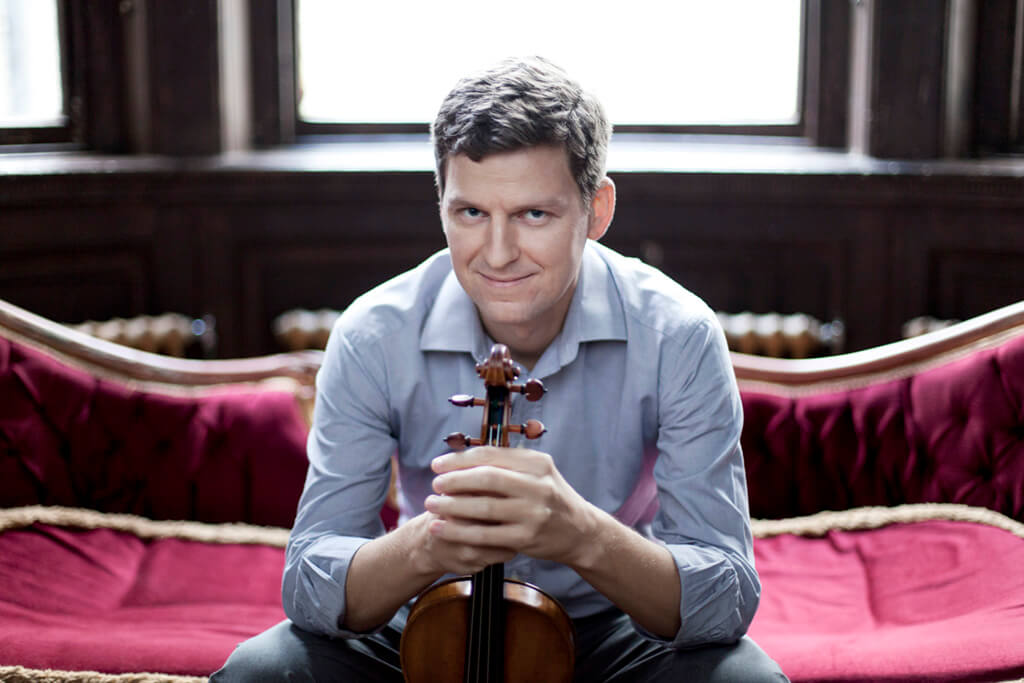
Bartók: Concerto for Orchestra. Dance Suite. First Rhapsody for Violin and Orchestra (two versions of the ending)*. Second Rhapsody for Violin and Orchestra*. James Ehnes, violin*. Bergen Philharmonic Orchestra/Edward Gardner. Chandos CHSA 5189. Total Time: 80:28.
As a young man, Béla Bartók travelled widely throughout his native Hungary, often with fellow composer Zoltán Kodály, identifying and studying the folk music of various ethnic groups. Together they used the new recording technology — this was 1908, after all — to document what they found, much of it Magyar, but also Slovak, Romanian and Bulgarian folk music. Later, Bartók went to Algeria and Turkey to record the music of Arabs and Turks.
Bartók assimilated all this folk music into his own compositional style, usually without quoting any of it directly. The music on this recording shows this folk influence time and again. Magyar elements are especially prominent in the two rhapsodies for violin and orchestra, and the fourth movement of the Dance Suite is described by the composer as being “an imitation of quite complex Arab music.”
Canadian violinist James Ehnes has recorded a great deal of Bartók’s music, perhaps most notably on a CD devoted to the two violin concertos and the viola concerto (Chandos 10690). Although the two rhapsodies recorded here are lesser works, Ehnes gives us fine renderings of Bartók’s modernist transformation of gypsy style.
Like Ehnes, conductor Edward Gardner, who has also recorded a good deal of Bartók, shows a great affinity for the music of this composer. Since 2015, he has been music director of the Bergen Philharmonic and there is obviously fine chemistry between him and the orchestra. He and his Norwegian players take full measure of the major work on this CD, the Concerto for Orchestra (1944), composed with the virtuosity of Koussevitsky and the Boston Symphony in mind.
That said, what makes this CD really exceptional is the quality of the concert hall used for recording – the Grieghallen in Bergen – and the expertise of the Chandos engineers, Brian Pidgeon and Ralph Couzens. I have never heard the opening of the Concerto for Orchestra — soft cellos and basses, then string tremolandi con sordino — sound quite so mysterious. And the way the Tam-Tam is balanced with muted horns in the slow movement is remarkable. The Concerto for Orchestra is full of original sounds and unusual combinations of instruments and on this recording nearly everything comes through with both depth and clarity. The only effect I didn’t hear clearly was Bartók’s use of the muted horns against the harp glissandi just after rehearsal number 73.
Although there are many excellent recordings available of the Concerto for Orchestra, this is definitely one of the best. Add to this, fine performances of Bartók’s Dance Suite and the two rhapsodies — more than eighty minutes of music in all — and you have one generous CD.
LUDWIG VAN TORONTO
- SCRUTINY | TSO Lets Berlioz Do The Talking In Season Opener - September 21, 2018
- RECORD KEEPING | Even Yannick Nézet-Séguin Can’t Make Us Love Mozart’s La Clemenza di Tito - September 6, 2018
- RECORD KEEPING | Giovanna d’Arco With Anna Netrebko Explains Why The Best Operas Survive - August 30, 2018



